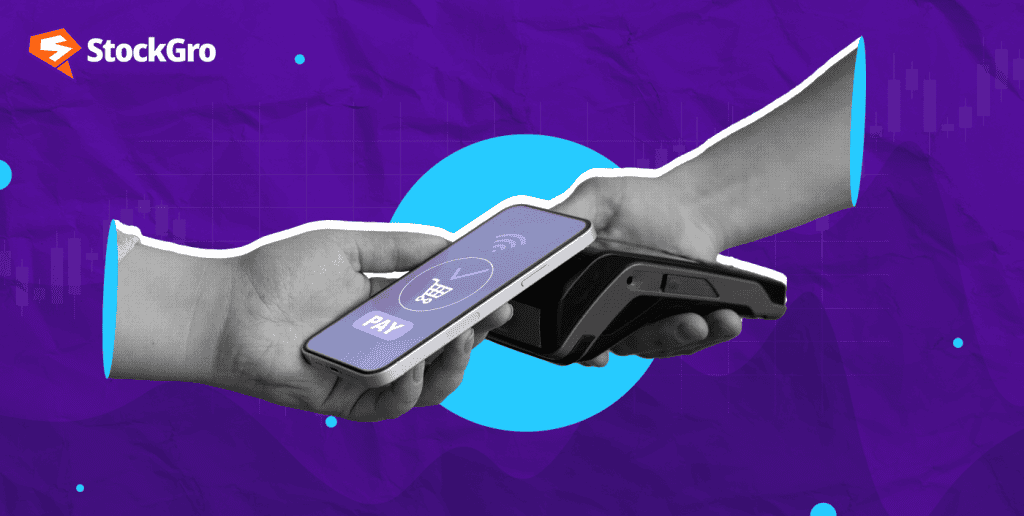
In the past few years, India has undergone many revolutionary changes, which once seemed impossible. In the 77 years of independence, India has marched to become the 5th largest economy with a gross domestic product (GDP) of US$ 3.54 trillion as of June 2024. There are many growth drivers, such as digital payment platforms, in the achievement of this milestone.
Facilitating the financial needs of a large population like that of India can be a difficult task. However, some bright minds in the country made it possible with the Digital India revolution. They established striking reforms like Unified Payment Interface (UPI), FASTag by National Electronic Toll Collection (NETC), net banking facility, cashless economy objectives, etc.
There are multiple facets of this digital payment revolution in India, and it has made a significant impact on the economy. Let’s discuss this growth and understand its future in India.
Digital India Mission
Since the inception and growth of the internet, the world has transformed into a globally connected village. Employing digitalisation technology in various facets of human life aimed at facilitating the same.
With a similar focus, the Indian government launched the Digital India programme in 2015. It specifically aimed to raise the overall living standards by facilitating areas like health, education, finance, governance, etc., through digitalisation. The mission has been successful to an extent, and according to a report, India is the third-largest digitised nation in the world.
Some of the components of this mission are:
- Aadhaar is the key identification document in India. It has grown to be one of the most important documents and nearly 138 crore aadhaar numbers are generated as of September 2023.
- DigiLocker was launched to safeguard digital forms of documents. Its security and authenticity has been crucial and is aiding 33 crore users all over the country.
- UPI was a massive reform for providing a low-cost digital payment platform. In the span of 8 years from launch it has attracted a humongous volume of ₹ 13,116 crores as of FY 2023-24.
- e-NAM is a trading portal for agriculture-related products and services. It aims to cater agriculture related knowledge, price directives and assistance to farmers. It cover 1389 ‘Mandis’ (markets) as of February 2024.
The digital payment revolution
The digital payment revolution is one of the key elements of the Digital India programme. Compared to all other components, it has made a humongous impact on the living patterns of Indians. The digital payment transaction volume is growing at approximately 44% compounded annual growth rate (CAGR).
| Year | Digital payment transaction volume |
| FY 2021-22 | ₹ 8,839 crores |
| FY 2022-23 | ₹ 13,462 crores |
| FY 2023-24 | ₹ 18,737 crores |
| FY 2024-25(5 months till August 31, 2024) | ₹ 8,659 crores |
The National Payments Corporation of India (NPCI), established in 2008, is the origin of major digital payment reforms in India. The organisation manages retail transactions and settlements across the nation. Some of its key products, UPI, Immediate Payment Services or IMPS, RuPay, NETC, National Automated Clearing House or NACH, have contributed significantly to people’s lives in India.
Among these, UPI has been one of the most crucial drivers of digital payment growth in India. It was launched in 2016 with an aim to create a low-cost and accessible platform that can merge several banking features under one hood.
Apart from these products, other factors have also driven the growth of digital payments in India.
Check this out! Stock trading will never be the same: UPI’s game-changing move!
Key drivers
- Consumer awareness
Due to growing internet penetration in the country and allied projects like Digital India, people started realising the power of digitalisation. People understood how technology can facilitate even the smallest work, like basic form fillings.
In the past few years, the GDP per capita of India has also increased, which indicates income growth. Moreover, situations like the COVID-19 pandemic exacerbated the need for virtual facilities to avoid contact and facilitate quick processing.
- Smartphone facility
The growth of technology in India also facilitated the growth of digital payments. Moreover, due to the seamless production and import of smartphones, affordability increased. It further facilitated technology access.
- Government policies
Many government policies, such as demonetisation and financial inclusion schemes, like Jan Dhan Yojana, were the key drivers for digital payment popularity. Gradually, people also realised various cashless economy benefits.
- Growing inclination towards investment
Due to the growth of purchasing power and the availability of innovative financial products, investors found an opportunity to make investments in one click. Moreover, foreign investors also found India an attractive investment destination due to the ease of transaction. Moreover, a growing inclination towards investments encourages innovative applications and software to simplify the process.
- Fintech revolution
In the past few years, a combination of finance and technology has taken over the world. In India, fintech startups and innovations have contributed significantly to the growth of digital payments. India’s fintech adoption is 87%, higher than the average world adoption rate.
Impact of digital payment on the Indian economy
The speedy adoption and spread of the digital payment revolution had a significant impact on the Indian economy. Let’s discuss this impact in various aspects:
- GDP growth
The Indian economy has experienced positive growth in the past few years, except for the pandemic. Overall consumer spending, investments and other transactions are revolutionised due to the growth of digital payments. It has further catalysed the growth of GDP.
As of June 2024, the Indian GDP has surpassed major countries like the United Kingdom. Moreover, India has the highest population in the world, which can affect the per capita GDP. However, it has also grown in momentum over the past few years.
- Financial inclusion
India’s financial inclusion index by the Reserve Bank Of India (RBI) has reached the mark of 64.2 in FY 2023-24. It is a comprehensive index that tests access, usage and quality of inclusion. UPI and Jan Dhan Yojana can be considered crucial for this financial inclusion. The ease of payments through a single click motivates people to open bank accounts and transact using technology.
- Cashless economy
In the 2016 NITI Aayog report, the government’s aim of transforming into a cashless economy was expressed. The growth of digital payment platforms has catalysed the government’s aim. Here are some of the cashless economy benefits that can outshine the traditional system in many ways:
- Increased transparency in the transaction.
- Growing awareness of investment instruments.
- Access to bank accounts anytime and anywhere with technology.
- Steps towards eliminating social barriers like gender disparity.
- Reducing the risk of theft or loss.
- Access to government services
Several government schemes, such as pensions, subsidies, etc., can be easily accessed with digital payment platforms or through bank applications/websites. The need for physical cash is eliminated at several levels and has helped potential beneficiaries access government schemes.
- Financial awareness
The growing number of digital payment platforms and services has increased financial awareness. People can easily access innovative financial instruments, investment techniques, strategies and knowledge through digital payment platforms. It makes a significant difference as it will motivate people to save, invest and discipline their finances.
Future of digital payments in India
These days, India is considered as a crucial player in the geopolitical setting due to its overall growth. The digital payment revolution has been a keen driver for the same. Its prospects seem positive in many facets for the country.
Opportunities
Made in India product UPI is considered one of the finest financial reforms, and it has also spread its reach in countries like Singapore, Bhutan, United Arab Emirates, Mauritius, etc.
Moreover, the government is optimistic about the growth of digital payment platforms. Its transaction volume may grow three-fold by 2028-29. RBI’s efforts to launch e₹ (digital rupee/eINR) or Central Bank Digital Currency (CBDC) is in its pilot phase. Moreover, private and public sectors are innovating to link digital payment platforms with various sectors like health to ease overall operations.
An interesting read: India’s UPI expansion and the call for local fintech empowerment
Threats
However, there are certain threats that lurk over this growth of digital payment platforms in India, such as:
- Cyber security can be a key concern to combat in the upcoming times.
- There is a need for a more suitable digital payment infrastructure.
- Lack of innovation can be a hurdle.
- Low awareness or resistance to change from traditional methods can restrict growth.
Also, read Paytm case study: The dramatic downfall of a fintech pioneer.
Final Thoughts
India’s growth digital payment growth story is inspiring and optimistic. It is potentially capable of handling various elements for financial growth and catering to a large customer base. Moreover, the innovation in recent times has catalysed its popularity among retail customers in the country.
The impact of digital payments on the Indian economy is impressive for the world. Its push for the country’s GDP, cashless economy, financial inclusion and financial awareness has catered to a large part of the population. The prospects of the growth of digital payment platforms seem optimistic, with varied opportunities. However, some hurdles need to be overcome for a seamless process of the same.
FAQs
- What is the impact of online payments in India?
Online payment has become a crucial part of the lives of Indians. It has catalysed the aim of a cashless economy, which can help instil transparency in the overall financial process. Moreover, online payment has helped in easy access to bank accounts and investment opportunities. The impact is visible in almost every sector of the nation.
- What are the challenges of digital payments in India?
The digital payments growth may be restricted by some hurdles, such as cyber attacks and lack of awareness. The influx of more customers may make the current infrastructure obsolete. Therefore, its upgrade is necessary. Restriction of traditional mindsets may become a hurdle for digital payment platforms.
- How is UPI helping the Indian economy?
UPI has revolutionised Indian payment methods. It has made access to bank accounts easy for small customers. Moreover, it has driven financial inclusion in India. It has helped the Indian GDP grow at significant levels. The transparency that online transactions have instilled in the system also helps in security from theft or loss of money.
- How is CBDC different from UPI?
CBDC is the digital currency introduced by the RBI. It is yet in its pilot phase and is not fully introduced in the country. UPI, on the other hand, is a payment interface that links banks with mobile applications and transfers money during transactions. Moreover, e₹ or CBDC is only the mode of payment. CBDC is a currency.
- What is the main purpose of Digital India?
Digital India is a programme launched by the Indian government that aims to spread digitalisation in the country. It seeks to facilitate all the sectors, such as health, finance, education, industries, etc., through digitally connecting them. Digital India has reformed India in many ways.

